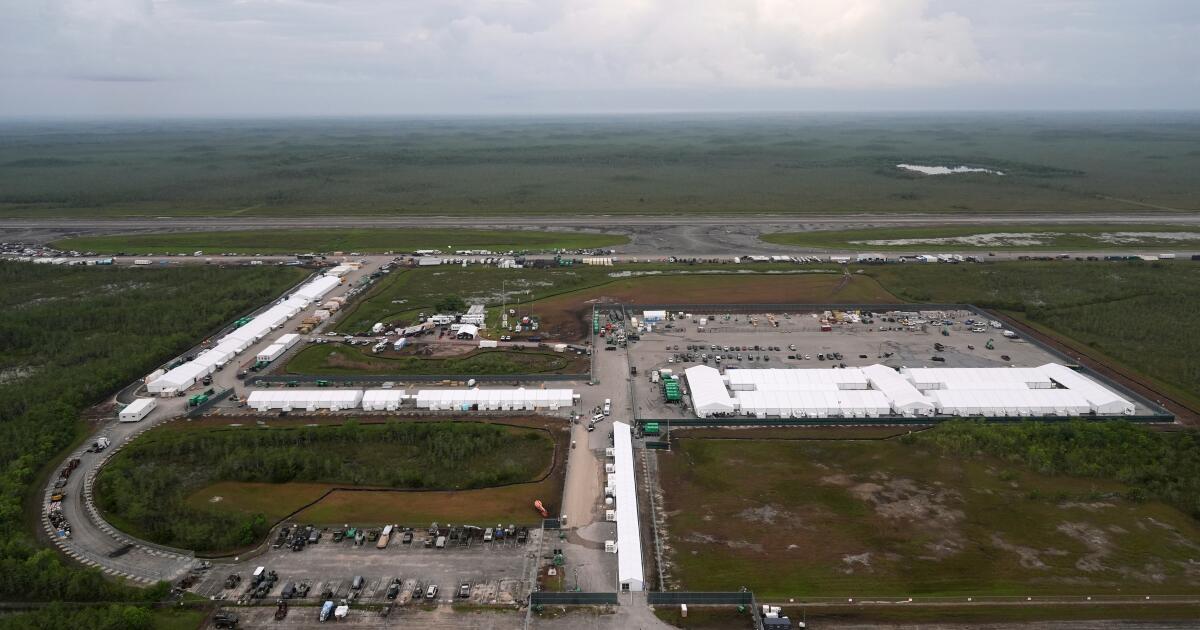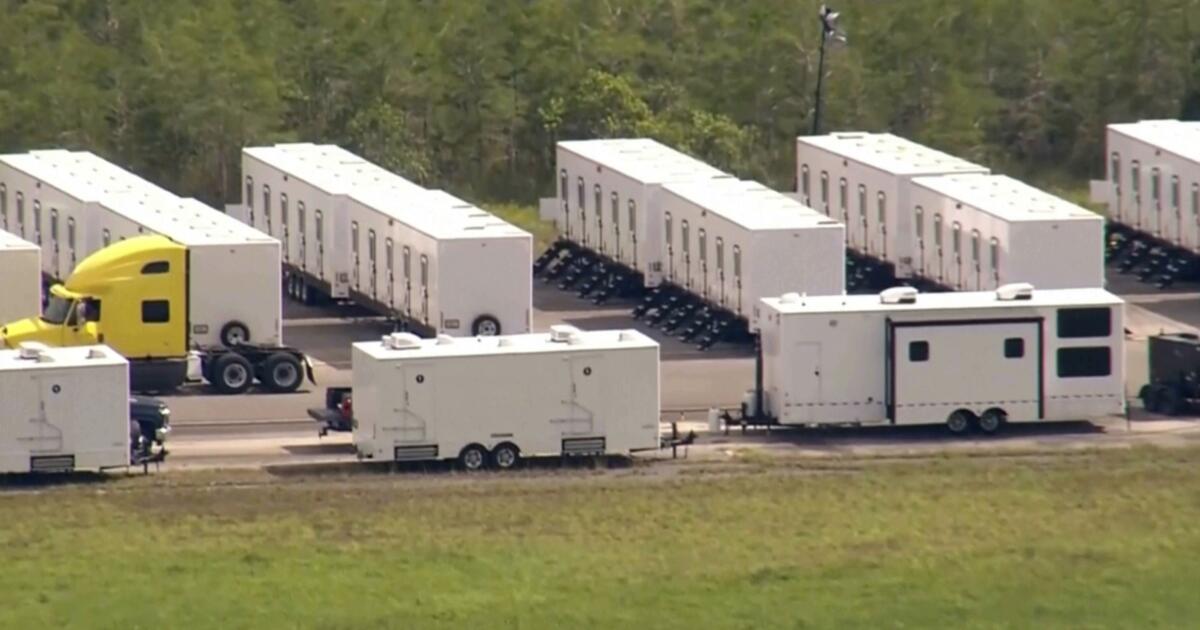Top Florida official says ‘Alligator Alcatraz’ will likely be empty within days
TALLAHASSEE, Fla. — A top Florida official says the controversial state-run immigration detention facility in the Everglades will likely be empty in a matter of days, even as Republican Gov. Ron DeSantis’ administration and the federal government fight a judge’s order to shutter the facility dubbed “Alligator Alcatraz” by late October. That’s according to an email exchange shared with the Associated Press.
In a message sent to South Florida Rabbi Mario Rojzman on Aug. 22 related to providing chaplaincy services at the facility, Florida Division of Emergency Management Executive Director Kevin Guthrie said “we are probably going to be down to 0 individuals within a few days.” Rojzman, and the executive assistant who sent the original email to Guthrie, both confirmed the veracity of the messages to the AP.
A spokesperson for Guthrie, whose agency has overseen the construction and operation of the site, did not immediately respond to a request for comment.
News that the last detainee at “Alligator Alcatraz” could leave the facility within days comes less than a week after a federal judge in Miami ordered the detention center to wind down operations, with the last detainee needing to be out within 60 days. The state of Florida appealed the decision, and the federal government asked U.S. District Judge Kathleen Williams to put her order on hold pending the appeal, saying that the Everglades facility’s thousands of beds were badly needed since detention facilities in Florida were overcrowded.
The environmental groups and the Miccosukee Tribe, whose lawsuit led to the judge’s ruling, opposed the request. They disputed that the Everglades facility was needed, especially as Florida plans to open a second immigration detention facility in north Florida that DeSantis has dubbed “Deportation Depot.” During a tour of the South Florida facility last week, U.S. Rep. Maxwell Frost (D-Fla.) said he was told that only a fraction of the detention center’s capacity was in use, between 300 and 350 detainees.
Williams had not ruled on the stay request as of Wednesday.
The judge said in her order that she expected the population of the facility to decline within 60 days by transferring detainees to other facilities, and once that happened, fencing, lighting and generators should be removed. She wrote the state and federal defendants can’t bring anyone other than those who are already being detained at the facility onto the property.
Environmental groups and the Miccosukee Tribe had argued in their lawsuit that further construction and operations should be stopped until federal and state officials complied with federal environmental laws. Their lawsuit claimed the facility threatened environmentally sensitive wetlands that are home to protected plants and animals and would reverse billions of dollars spent over decades on environmental restoration.
The detention center was built rapidly two months ago at a lightly used, single-runway training airport in the middle of the rugged and remote Everglades. State officials have signed more than $245 million in contracts for building and operating the facility, which officially opened July 1.
Payne and Schneider write for the Associated Press. Schneider reported from Orlando, Fla.

